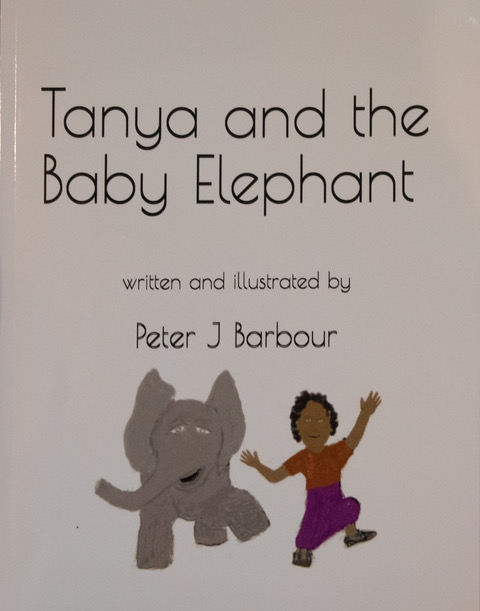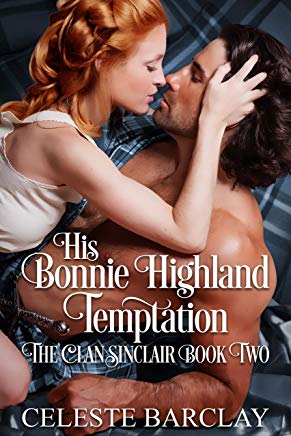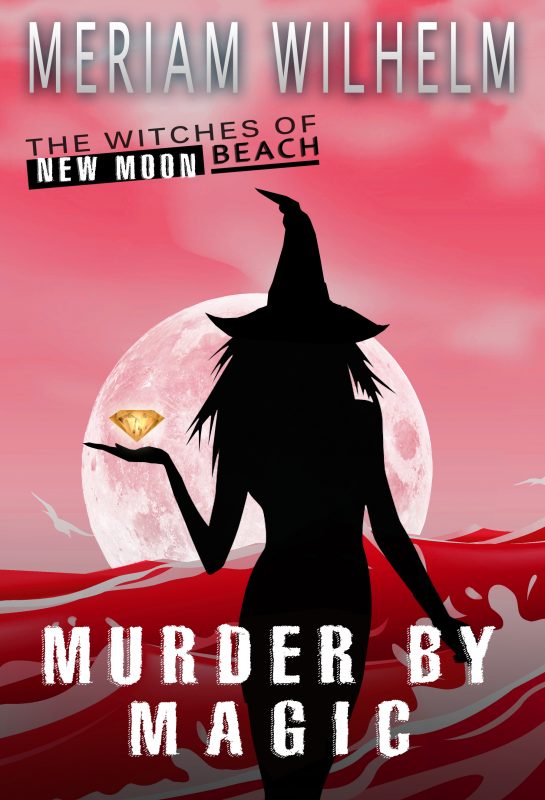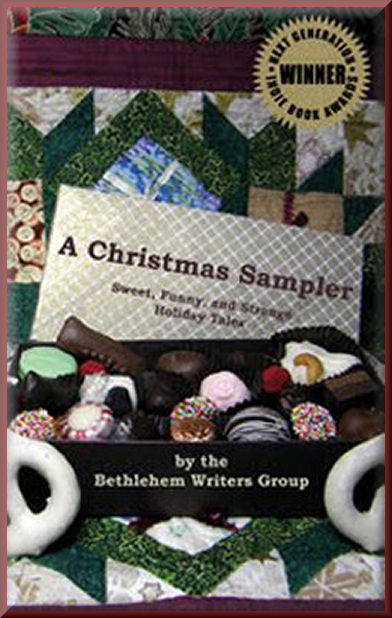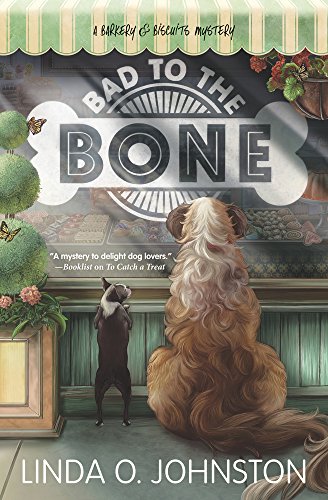Gore by Kidd Wadsworth
May 18, 2020 by Kidd Wadsworth in category Infused with Meaning by Kidd Wadsworth
Gore
I’m talking gore today. I’m going for yuck, gross and gag me with a spoon. This isn’t about obscenity or shock, it’s about making your reader vomit. Yes, I really said that. Gore is often used to identify the villain. Today I’ll talk about layering gore, like layers of paint.
First lay down the primer, a sentence which prepares the reader.
Her stomach threatened to spill its lunch at the smell of the thing.
Apply the first top coat. The description is still general only a few details are added.
The witch was no more than four feet tall and nearly bald. What little hair she had was filled with sticks and clumps of seaweed.
Now for the finish coat. Note the added details, the adjectives stacked up one after another.
Two weak, watery eyes peered out of a face covered with pus-spewing sores. A rat sat her shoulder, her belt was a live snake, her clothes made from the skin of a deer to which pieces of green, maggot-laden rotting meat still clung. She had no shoes.
Later this story returns to the gory witch.
This time she’s attempting to get home. The same pattern emerges. First the primer: sentences which prepare the reader, which set the stage for what is to come.
The witch’s breath came in ragged gasps. Lying on her belly, she clawed up clumps of soil, her fingers relentlessly searching the ground. Yes! Warm air touched the skin of her middle finger. Following the vent of air, she pushed her finger into the ground.
With the first top coat, details are added, and the reader begins to feel nauseous.
Her eyes rolled back in her head. She reached for the change, sticking out her tongue so far she gagged herself. Tongue first, then teeth, nose and eyes, she dissolved, the warm goo oozing down her arm, following her finger, dripping into the vent, into the pit below the soil. Head and neck followed. Feet, ankles, knees and thighs liquified, rushing up her middle and down her arm. The hand which had not found the vent and its arm also turned to mush and dripped into the earth. Her core dissolved and with it the rat, which had sat on her shoulder, and the snake she’d fashioned into a belt. These also dribbled into the vent. Finally, the arm, hand and finger trickled away. All that remained were a few bits of seaweed and a poorly scraped deer hide.
Now for the finish coat.
But wait, how can we possibly improve on all that gore. Yes, but of course, we reveal the depths of her villainy, she’s not a witch at all. She’s something much worse.
Two hundred feet, seeping through cracks, dripping from rock to rock, she drained into the hot bowels of the Earth, and the bubbling pit of lava which lay directly below dragon’s keep. Around the pit, the antenna of lava beetles shot up, awakened by the scent of a dragon. The witch goo, now floating on the lava’s surface, congealed first into a shapeless glob. Within minutes, the dragon’s large backbone formed. Weakened of magic, it was a mere 20 feet long. Over the next two days the head formed, the energy required to reconstitute its immense brain, cooling the lava more than a hundred degrees. As the belly, limbs and wings grew the lava beetles began their work, scraping off and eating ill-formed scales—of which there were many—allowing the dragon to regrow newer stronger ones. At last the claws formed, only one made of obsidian. Whole again, the dragon slept, drawing energy from the heat of the pit, dreaming, tasting the young girl and her magic which would soon fill its aching belly.
All that gore has accomplished its goal. It has prepared the reader. The villain is coming—and she’s a dragon.
Happy writing. I love gore, it’s addictive. Please respond with a bit of your best. I look forward to vomiting over your work.
You Have the Ruby Slippers by Laurie Stevens
May 17, 2020 by A Slice of Orange in category Guest Posts tagged as guest post, Laurie Stevens
You Have the Ruby Slippers
The timeless story of The Wonderful Wizard of Oz by L. Frank Baum has been known to symbolize many things, among them the economical and social struggles of the 1890s. It can, as well, represent the journey to attain our goals as authors. In Dorothy’s case, she wants to get home. Her adventure through the land of Oz presents her with both risks and opportunities. They are the same ones most people face.
Obviously, the poppy fields can symbolize the perils of drug/opioid use, but
if we keep to Dorothy’s perspective, even her newfound friends can represent the challenges we face when pursuing a goal.
Take the Cowardly Lion. He procrastinates, uses excuses to run away, and is crippled by fear. If Dorothy were to follow his path (before he gets his Badge of Courage) she would never attain her goal of getting home.
What about the Scarecrow? He is the brains of the operation (he just doesn’t know it). Assuming he represents intelligence, you may ask why that would be a bad thing? Well, how often do you over-rationalize? Over-think your story? Besides fear playing a part in hampering our journey, we might use our intellect to our disadvantage. We may learn that “9 out of 10 people fail in this field.” Is a fact like that going to serve you? It’s going to discourage you. True, intelligence is a good thing. It’s important to study for a test. Without doing so, you’ll fail. Training for a job gives you the tools you need to perform successfully. Still, you want to make sure you see the forest through the trees. If you get caught up in the day-to-day minutia, you’ll lose sight of your goal. It’s good to absorb information. Get training. Watch the pros. Read books on the subject, but at some point, absorb the info and stamp your brand on it. Too much intellect will rationalize away your dream.
Ah, the Tin Man. He represents the heart. How could that be termed as a challenge for Dorothy? To follow your heart is a noble thing. To be sensitive to others, caring, and loving is positive. However, if you form unhealthy attachments, to your past, say, or to someone who is not good for you, your heart, then, hampers your journey.
The most obvious risk for Dorothy, however, is to cross paths with the Wicked Witch of the West. The witch wants to steal the power of the ruby slippers (or silver shoes, if you’re following the book). Why does the witch want them so badly? They hold immense power.
What is that power? It’s the realization that Dorothy had the power to reach her goal all along. How powerful is that? It lay right at her feet, on her feet to be exact.
Dorothy had to first cycle through a lot of experiences to be able to accept the news the Good Witch of the North (call her Glinda, as in the movie version) delivers. Perhaps, if Glinda had said from the beginning, “You have always had the power to go home,” Dorothy wouldn’t have believed her. Glinda has the ability to give the super-charged slippers to the wearer, but she can’t make the wearer use them.
And so, it is with us. Someone can wave a news bulletin of confidence in front of your face, and if you’re not ready to accept it, you simply won’t see it. The good news is, life offers us these experiences in which to learn. At some point, you will cage your fear, educate yourself while still believing in dreams, and let go of unhealthy attachments that weigh you down. To make use of the magic, Dorothy needed to click her heels. For writers, we have to write, and remind ourselves every so often that we wear the ruby slippers.

Laurie Stevens is the author of the Gabriel McRay thriller series. The books have won twelve awards, among them Kirkus Reviews Best of 2011 and a Random House Editors’ Book of the Month. International Thriller Writers claims she’s “cracked the code” in regards to writing psychological suspense. Laurie co-edited the 2019 Sisters in Crime anthology Fatally Haunted, and her short stories have appeared in many anthologies and magazines. Laurie lives near the setting of her books, the Santa Monica Mountains, with her husband, two snakes, and a cat.
You can find out more about Laurie on her website, Facebook, Twitter or Instagram.
The Award Winning Gabriel McRay Series
Something to Think About
May 15, 2020 by Rebecca Forster in category Writing tagged as coronavirus, e-readers, indie authors, indie publishing, inspiration, readers, writing, writing craft, writing life
Last night all I could think about was the deadline for this blog post. I had put it off all month. At the last minute I was hoping to write something inspirational for both readers and writers. While hope springs eternal, I found myself pondering – and pondering – what that perfect message should be.
If I’m going to be honest, I knew I wouldn’t come up with anything substantial because I have been distracted. When I’m distracted I usually sit down with a friend at a coffee shop and hash out whatever is on my mind until I’m back on track. Since I can’t do that you’re ‘it’, my friends in a virtual coffee shop. I’ll tell you what I’ve been doing while I’ve been locked down and pondering this post. We’ll start with the garden and move on from there.
Tomato plants. I haven’t actually thought about the tomatoes as much as I have been checking on them. Going outside every fifteen minutes is a nice break from staring at my blank computer screen or at my husband napping on the couch. No matter how often I check, though, the tomatoes still have not turned red and my husband still has not gone back to work.
My fabric stash. Over the last eight weeks I have knocked it down some. Here’s the count: five blouses, a quilt top, a fully-lined summer suit (1 dress that would have fit 15 years ago when I was 25 pounds lighter), and ten face masks. Here’s my question: is sewing my stash like a tree falling in the forest or is it like ‘build it and they will come’? I think it’s the latter. When the day comes to have dinner in a restaurant I will have lots to wear.

Work. Honestly, my brain has been mush when it comes to writing a new book. I have an idea but I couldn’t get it to gel, so I looked through my files and reread some of my early work. I had so much fun that I edited and published five novels from the 90s. I also published The Death of Me, a novella I wrote that morphed into a novel (Before Her Eyes). These two works are as different as they are similar. Some times pondering one thing will lead to another. The trick is not to ignore the ‘other’. Productivity: mission accomplished.
Finally, I’ve been pondering important things: the individual versus the greater good, the constitution and ‘guidelines’ as our lockdown stretches into yet another week, another month, another century. My heart is sad for those who are sick and who have died; my heart is breaking for my relatives and friends who are losing their livelihood, home and, well, everything they have worked hard for. I won’t tell you which side I’m on when it comes to hunkering down or opening up. I will only say that I realize that what I have been pondering all along is something readers and writers have always been inspired by: story. No matter what road we choose there will be stories at the end of it. We are writing them now.
These will be tales of tragedy and triumph; there will be something to laugh at and something to cry over. We will all see these events – and each other – differently. Eventually there will come a time when we put pondering aside so that we can sit with friends at a coffee shop, tell our stories, and hug each other when all is said and done.
Kitty Bucholtz, May Featured Author
May 14, 2020 by Kitty Bucholtz in category Featured Author of the Month tagged as Kitty Bucholtz, May Featured Author of the Month, romantic comedy, Superheros, Write Now Workshop Podcast

Kitty Bucholtz combined her undergraduate degree in business, her years of experience in accounting and finance, and her graduate degree in creative writing to become a writer-turned-independent-publisher. She writes romantic comedy and superhero urban fantasy, often with an inspirational element woven in. She loves to teach and offer advice to writers through her WRITE NOW! Workshop courses and the WRITE NOW! Workshop Podcast.
Besides Kitty’s website and WRITE NOW! Workshop Podcast, you will find her here on the 9th of each month writing It’s Worth It.
Books by Kitty Bucholtz
In the Judgment Seat
May 13, 2020 by Bethlehem Writers Group in category From a Cabin in the Woods by Members of Bethlehem Writers Group tagged as constructive criticism, critiques, short story contest

From a Cabin in the Wood’s is a column featuring authors from the Bethlehem Writers Group. Writing for us this month is Dianna Sinovic.
Born and raised in the Midwest, Dianna Sinovic has also lived in three other quadrants of the U.S. She writes short stories and poetry, and is working on a full-length novel about a young woman in search of her long-lost brother.
In the Judgment Seat
The Bethlehem Writers Group, one of the writers groups I’m in, sponsors an annual short story contest for all non-members, and the members do much of the judging—the first cuts, the semifinalist round, and the finalists. Once the finalists are selected, a guest judge (an author outside the organization) makes the final call on the rankings of first, second, and third.
Each story is judged by three people, using a templated rubric, with the two highest scores determining whether the story makes it to the semifinalist category. Sometimes the same story can accrue widely divergent scores. How could three readers have such different reactions? That difference of opinion explains why sometimes the debates the group has on which stories come out on top are quite heated.
I’m often amazed at the creativity of some of the entrants, but also always disappointed in others. I think—if only the author had done X, Y or Z, the results would have been much more satisfying or made more sense.
It’s also instructive to see how often an entry lacks a story arc. Even if a story is short and basically just one scene, it still needs a beginning, middle and end, with a goal in mind for the main character. Author Juliet Marillier said that stories with no proper ending also don’t make the cut when she judges.
It’s also interesting to see that some authors submit pieces that are mostly likely memoir. This can work if the personal account contains the essence of a good story, with that needed arc and depth of character/emotion, but many often don’t.
How the theme is approached is also eye opening. We choose a new contest theme every other year. This year’s topic was animals; it didn’t matter what kind of animal or how many, but an animal had to play an important part in the story. I read tales that featured insects, cats, horses, dogs, sea animals, and reptiles, some good, some not so good. With research only a browser click away, I was discouraged at how often writers didn’t do their homework when trying to depict animal behavior.
Of course, it’s much easier for me to see the flaws in other people’s works than in mine.
Each year’s judging process serves as a reminder to always ask others to read my work and offer their feedback, to let me know where my stories fall short so I can further revise.
Sweet, Funny, and Strange Anthologies Featuring Stories From The Bethlehem Writers Group’s Short Story Award
Affiliate Links
A Slice of Orange is an affiliate with some of the booksellers listed on this website, including Barnes & Nobel, Books A Million, iBooks, Kobo, and Smashwords. This means A Slice of Orange may earn a small advertising fee from sales made through the links used on this website. There are reminders of these affiliate links on the pages for individual books.
Search A Slice of Orange
Find a Column
Archives
Featured Books
TANYA AND THE BABY ELEPHANT
Tanya is stuck at home. Can a baby elephant make her less lonely?
More info →MURDER BY MAGIC
The word outsider describes Ola Mae Masters to a T.
More info →A CHRISTMAS SAMPLER: Sweet, Funny, and Strange Holiday Tales
Winner of the 2010 Next Generation Indie Book Awards for Best Short Fiction and Best Anthology
More info →Newsletter
Contributing Authors
Search A Slice of Orange
Find a Column
Archives
Authors in the Bookstore
- A. E. Decker
- A. J. Scudiere
- A.J. Sidransky
- Abby Collette
- Alanna Lucus
- Albert Marrin
- Alice Duncan
- Alina K. Field
- Alison Green Myers
- Andi Lawrencovna
- Andrew C Raiford
- Angela Pryce
- Aviva Vaughn
- Barbara Ankrum
- Bethlehem Writers Group, LLC
- Carol L. Wright
- Celeste Barclay
- Christina Alexandra
- Christopher D. Ochs
- Claire Davon
- Claire Naden
- Courtnee Turner Hoyle
- Courtney Annicchiarico
- D. Lieber
- Daniel V. Meier Jr.
- Debra Dixon
- Debra H. Goldstein
- Debra Holland
- Dee Ann Palmer
- Denise M. Colby
- Diane Benefiel
- Diane Sismour
- Dianna Sinovic
- DT Krippene
- E.B. Dawson
- Emilie Dallaire
- Emily Brightwell
- Emily PW Murphy
- Fae Rowen
- Faith L. Justice
- Frances Amati
- Geralyn Corcillo
- Glynnis Campbell
- Greg Jolley
- H. O. Charles
- Jaclyn Roché
- Jacqueline Diamond
- Janet Lynn and Will Zeilinger
- Jeff Baird
- Jenna Barwin
- Jenne Kern
- Jennifer D. Bokal
- Jennifer Lyon
- Jerome W. McFadden
- Jill Piscitello
- Jina Bacarr
- Jo A. Hiestand
- Jodi Bogert
- Jolina Petersheim
- Jonathan Maberry
- Joy Allyson
- Judy Duarte
- Justin Murphy
- Justine Davis
- Kat Martin
- Kidd Wadsworth
- Kitty Bucholtz
- Kristy Tate
- Larry Deibert
- Larry Hamilton
- Laura Drake
- Laurie Stevens
- Leslie Knowles
- Li-Ying Lundquist
- Linda Carroll-Bradd
- Linda Lappin
- Linda McLaughlin
- Linda O. Johnston
- Lisa Preston
- Lolo Paige
- Loran Holt
- Lyssa Kay Adams
- Madeline Ash
- Margarita Engle
- Marguerite Quantaine
- Marianne H. Donley
- Mary Castillo
- Maureen Klovers
- Megan Haskell
- Melanie Waterbury
- Melisa Rivero
- Melissa Chambers
- Melodie Winawer
- Meriam Wilhelm
- Mikel J. Wilson
- Mindy Neff
- Monica McCabe
- Nancy Brashear
- Neetu Malik
- Nikki Prince
- Once Upon Anthologies
- Paula Gail Benson
- Penny Reid
- Peter Barbour
- Priscilla Oliveras
- R. H. Kohno
- Rachel Hailey
- Ralph Hieb
- Ramcy Diek
- Ransom Stephens
- Rebecca Forster
- Renae Wrich
- Roxy Matthews
- Ryder Hunte Clancy
- Sally Paradysz
- Sheila Colón-Bagley
- Simone de Muñoz
- Sophie Barnes
- Susan Squires
- T. D. Fox
- Tara C. Allred
- Tara Lain
- Tari Lynn Jewett
- Terri Osburn
- Tracy Reed
- Vera Jane Cook
- Vicki Crum
- Writing Something Romantic
Affiliate Links
A Slice of Orange is an affiliate with some of the booksellers listed on this website, including Barnes & Nobel, Books A Million, iBooks, Kobo, and Smashwords. This means A Slice of Orange may earn a small advertising fee from sales made through the links used on this website. There are reminders of these affiliate links on the pages for individual books.




































